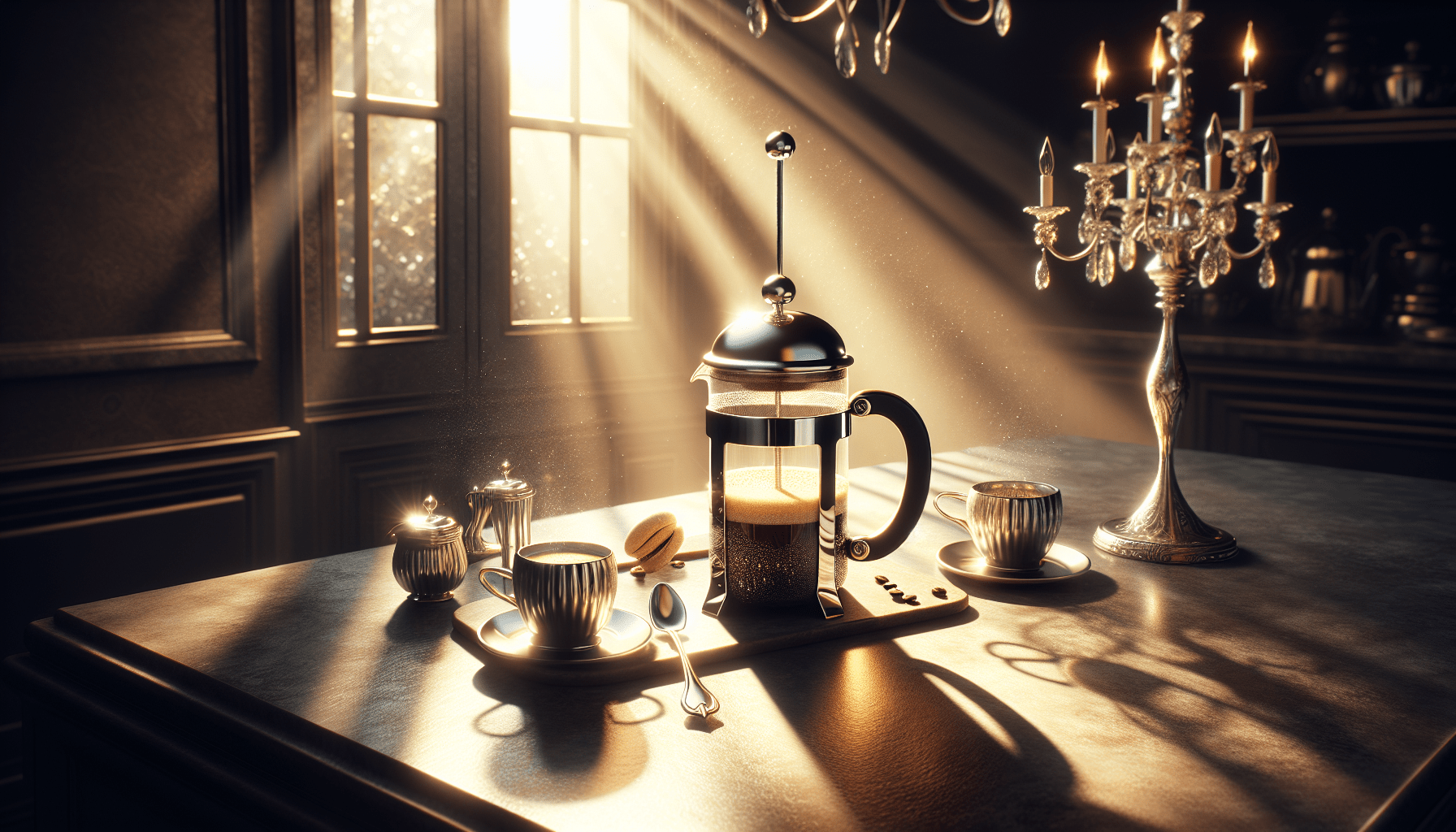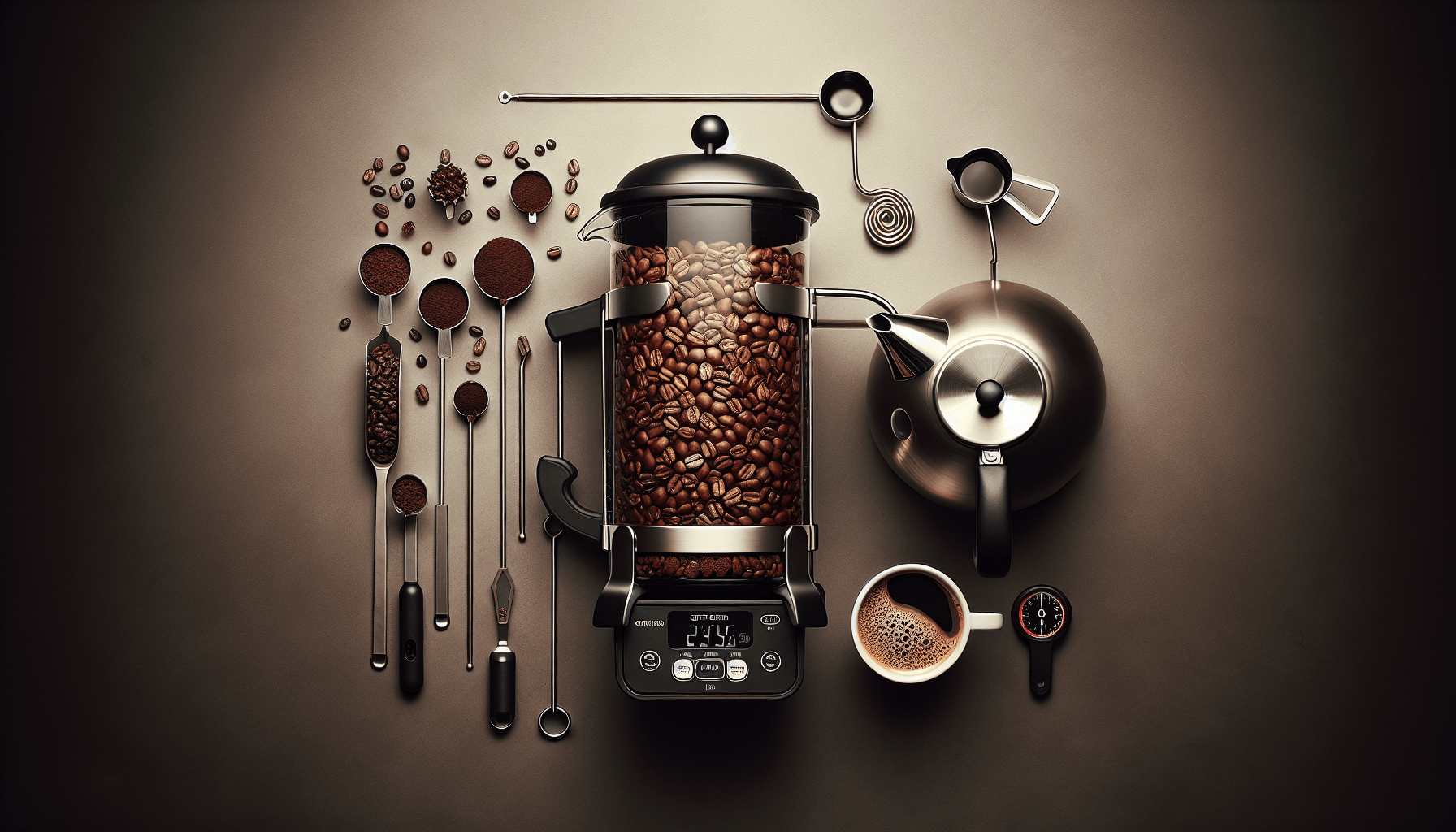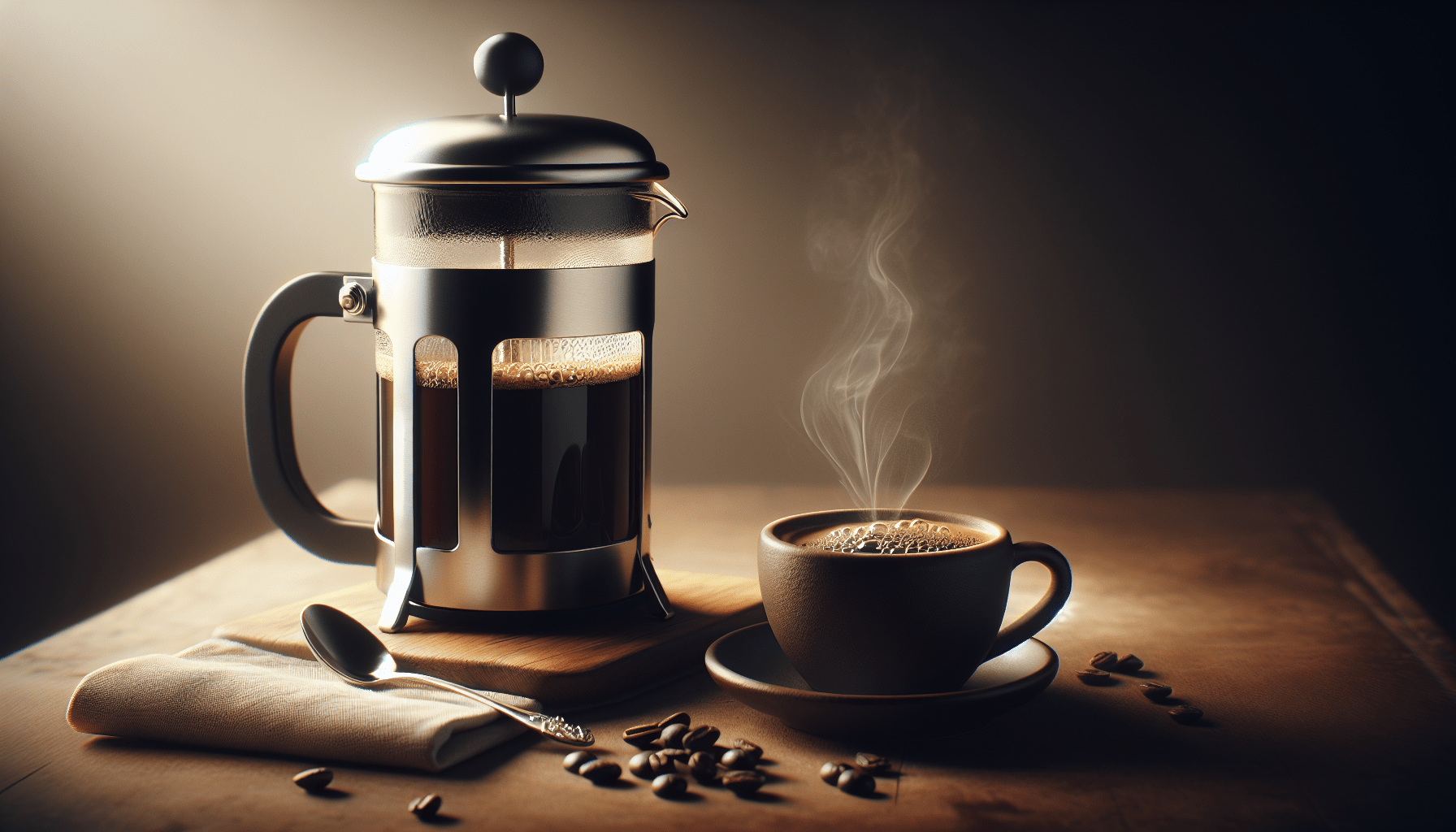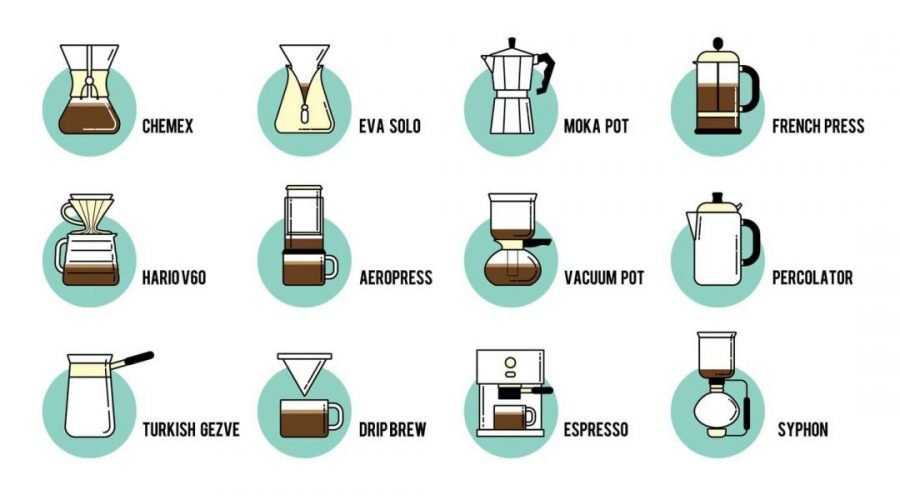Are you curious about how long it takes to brew a delicious cup of coffee using a French press? Well, wonder no more! In this article, we will explore the time it takes to brew coffee in a French press and offer some tips on how to optimize the process for the perfect cup. So grab your favorite mug and let’s dive into the world of French press coffee brewing!
Factors That Affect Brewing Time
When brewing coffee in a French press, there are several factors that can influence the brewing time. These factors include the coffee grind size, water temperature, coffee-to-water ratio, and brewing method. Each of these elements plays a crucial role in determining the overall brewing time and ultimately affects the taste and quality of the final cup of coffee.
Coffee Grind Size
The grind size of the coffee beans has a significant impact on the brewing time. The general rule of thumb is that a finer grind will result in a shorter brewing time, while a coarser grind will take longer. When the coffee is ground finely, it increases the surface area, allowing for faster extraction. However, grinding the beans too finely can lead to over-extraction and a bitter taste. On the other hand, a coarser grind will require a longer brewing time to extract the desired flavors.
Water Temperature
The temperature of the water used in the French press also affects the brewing time. Ideally, the water should be heated to around 195 to 205 degrees Fahrenheit (90 to 96 degrees Celsius). This temperature range helps to extract the optimal flavors from the coffee. If the water is too hot, it can result in over-extraction, while water that is too cool may under-extract the coffee and lead to a weak and bland brew.
Coffee-to-Water Ratio
The ratio of coffee to water is another important factor to consider when determining the brewing time. The general guideline is to use a ratio of one part coffee to approximately 15 parts water. However, this ratio can be adjusted according to personal preference. Using too much coffee can result in a stronger brew and a longer brewing time, while using too little may produce a weaker flavor and a shorter brewing time.
Brewing Method
Different brewing methods can also affect the overall brewing time in a French press. While the basic steps remain the same, slight variations in the technique can alter the time it takes to brew coffee. For example, some people prefer to stir the grounds after adding water, while others may let the coffee steep without any agitation. Additionally, the duration of steeping and plunging time can be adjusted to achieve different flavor profiles.
Preparation Time
Before diving into the actual brewing process, there are a few steps to take to ensure everything is ready. This preparation time is essential for making a smooth and enjoyable brewing experience.
Gathering Equipment and Ingredients
First and foremost, gather all the necessary equipment and ingredients for brewing coffee in a French press. This includes a French press, freshly roasted coffee beans, a coffee grinder, a kettle for boiling water, and a timer. Having everything readily available will save time and make the brewing process more efficient.
Boiling Water
To ensure proper extraction and the desired flavor, it is crucial to heat the water to the correct temperature. Boil water in a kettle or on the stovetop until it reaches the recommended range of 195 to 205 degrees Fahrenheit (90 to 96 degrees Celsius). Using a temperature-controlled kettle or thermometer can help accurately gauge the water temperature. Once the water is heated, remove it from the heat source and let it sit for a minute to cool slightly before starting the brewing process.
Brewing Time
Once all the preparations are complete, it’s time to start the actual brewing process. Understanding the different aspects of brewing time will help you achieve the perfect cup of coffee.
Steeping Time
After adding the coffee grounds to the French press, it is essential to let them steep in the hot water for a specific duration. The recommended steeping time for a French press is typically around 4 to 5 minutes. However, this can be adjusted based on personal preference and desired strength. If a stronger brew is desired, you can increase the steeping time by a minute or so, but be cautious not to go beyond 8 minutes as this may result in over-extraction and a bitter taste.
Plunging Time
Once the desired steeping time has elapsed, it is time to plunge the French press. Slowly and steadily, press down on the plunger, ensuring gentle pressure is applied to the coffee grounds. The plunging time should be around 20 to 30 seconds, but again, this can be adjusted according to personal preference. A longer plunging time may result in a finer sediment in the cup, while a quicker plunge might produce a cleaner cup.
Optimal Brewing Time
The optimal brewing time for a French press is subjective and depends on individual preferences. It is essential to understand the desired strength and flavor characteristics to determine the ideal brewing time.
Desired Strength
The desired strength of the coffee is a vital factor in determining the optimal brewing time. Some people prefer a bolder and more robust brew, while others enjoy a milder and smoother cup. Adjusting the brewing time can help achieve the desired strength. Generally, a longer brewing time will result in a stronger flavor, while a shorter brewing time will produce a milder taste. Experimentation and personal taste preferences are key in finding the perfect balance.
Personal Preference
In addition to desired strength, personal preference plays a significant role in determining the brewing time. Some individuals may enjoy a more complex and nuanced flavor profile, while others may prefer a simpler and straightforward taste. Experimenting with different brewing times can help identify the ideal balance between flavor, strength, and personal preference.
Experimenting with Brewing Time
One of the joys of brewing coffee in a French press is the versatility it offers for experimentation. Adjusting the brewing time allows for customization and exploration of different flavor profiles.
Adjusting Steeping Time
To experiment with the brewing time, start by adjusting the steeping time. If the coffee is too weak, try increasing the steeping time by 30 seconds to a minute. Conversely, if the brew is too strong or bitter, decrease the steeping time by the same increments. Keep track of the changes made and note the resulting flavors to find the perfect brewing time that suits individual taste preferences.
Trying Different Grind Sizes
Another aspect of experimentation is trying out different grind sizes. Coarser grinds generally require a longer brewing time, while finer grinds yield a quicker extraction. By adjusting the grind size, it is possible to alter the brewing time and achieve different flavor profiles. Take note of the differences in taste, clarity, and body to find the optimal grind size and brewing time combination.
Shorter Brewing Time
There are some benefits and drawbacks associated with a shorter brewing time in a French press.
Benefits
One of the main advantages of a shorter brewing time is convenience. If you’re in a hurry or need a quick cup of coffee, a shorter brewing time can be beneficial. It allows you to enjoy a freshly brewed cup without having to wait for an extended period. Additionally, a shorter brewing time often results in a milder and less intense flavor, which may be preferable for those who prefer a smoother and less robust cup of coffee.
Drawbacks
On the flip side, a shorter brewing time can also have some drawbacks. The coffee may be under-extracted, leading to a weaker flavor and a lack of complexity. Additionally, a shorter brewing time may not allow for the full extraction of the desirable flavors and aromas present in the coffee beans, resulting in a less satisfying cup. It is essential to find the right balance to ensure the coffee is not underdeveloped.
Longer Brewing Time
Extending the brewing time in a French press also has its own set of benefits and drawbacks.
Benefits
A longer brewing time allows for a more thorough and complete extraction of the coffee flavors. This can result in a bolder and more pronounced taste, with a greater depth of flavors. The extended brewing time allows the coffee to develop and release its full potential, creating a more satisfying and enjoyable cup.
Drawbacks
However, a longer brewing time can also lead to over-extraction. This can result in a bitter and unpleasant taste, overpowering the more subtle flavor notes. Additionally, a longer brewing time may lead to a fine sediment in the brewed coffee, which can affect the mouthfeel and texture of the cup. It’s essential to find the right balance to prevent the coffee from becoming overly bitter or gritty.
Avoiding Over-Extraction
Over-extraction is a common concern when brewing coffee in a French press. Two key steps can help avoid this issue.
Removing Coffee from French Press
To prevent over-extraction, it is crucial to remove the brewed coffee from the French press as soon as the plunging is complete. Leaving the coffee in the French press can result in continued contact with the grounds, leading to over-extraction and a bitter taste. Transferring the brewed coffee to cups or a separate container immediately after plunging helps maintain the desired flavor profile.
Pouring Brewed Coffee into Cups
When pouring the brewed coffee into cups, it is important to be mindful and avoid pouring any sediment or fine grounds into the cups. Tilt the French press slightly to decant the coffee while leaving the sediment behind. This step helps create a cleaner and more enjoyable cup of coffee, free from any unwanted grittiness.
Cleaning the French Press
Proper cleaning and maintenance of the French press are essential for ensuring the longevity and quality of future brews.
Disassembling the French Press
Start by disassembling the French press. Remove the plunger and the filter assembly from the beaker. Disassemble any additional parts, such as the mesh filter and the lid, if applicable. This step allows for thorough cleaning and removal of any residual coffee grounds.
Rinsing and Drying
Once disassembled, rinse each component of the French press with warm water to remove any remaining coffee residue. Pay particular attention to the mesh filter and plunger, as they tend to collect the most grounds. Allow all the parts to air dry completely before reassembling the French press. This helps prevent any moisture buildup that could lead to mold or bacterial growth.
Conclusion
Brewing coffee in a French press is a wonderful way to enjoy a flavorful and robust cup. Understanding the various factors that affect brewing time, such as coffee grind size, water temperature, coffee-to-water ratio, and brewing method, allows for customization and experimentation. Whether you prefer a shorter brewing time for convenience or a longer brewing time for a bolder flavor, the key is to find the optimal balance that suits your individual taste preferences. With proper preparation, brewing techniques, and cleaning, you can consistently brew coffee in a French press that satisfies your coffee cravings. So go ahead, grab your French press and start brewing your way to a delightful cup of coffee!




